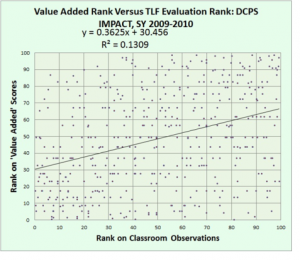**The Edvocate is pleased to publish guest posts as way to fuel important conversations surrounding P-20 education in America. The opinions contained within guest posts are those of the authors and do not necessarily reflect the official opinion of The Edvocate or Dr. Matthew Lynch.**
A guest column by Jim Estrada
Our nation is undergoing a cultural evolution as a result of an ethnic population explosion. In a blink of the eye, Hispanics, Latinos, and mestizos have grown to 54 million in 2015 and are projected to reach 132.8 million by 2050, according to the U.S. Census Bureau. Much of this growth will come from natural childbirth among U.S. citizens, not immigration as many in the U.S. have been led to believe to believe.
But what else do we not know about our nation’s largest and fastest-growing ethnic neighbors? Simply stated, very little!
We have a substantial information gap in the USA’s educational curricula regarding our nation’s non-European white populations. Exposure to accurate unbiased information about them, their histories, and contributions to our nation can lead to a better understanding of their increasing influence and contributions as the fastest growing consumers, K-12 students, taxpayers, voters, and members of the workforce. This gap represents a glaring need, as they are already the “majority” of the population in many metropolitan areas across the nation.
According to the Selig Center at the University of Georgia, consumer spending among Latinos increased appreciably and grown at a faster rate than that of the overall U.S. population. Since 1990 the nation’s Hispanic buying power grew dynamically. In sheer dollars, their economic clout rose from $212 billion in 1990, to $489 billion in 2000, to $978 billion in 2009, and was estimated to reach over $1.5 trillion by 2015.
To effectively interact with this diverse and fast-growing ethnic group, mainstream society must become better informed of its members’ histories, cultures, and contributions to our nation. Already, U.S. Spanish-language media has recognized the historical void in positive programming images and limited news coverage related to the Latino segment of U.S. society and is addressing that need. In a world of increasingly diverse information sources and content, Spanish-language media is demonstrating that cultural relevance works; and more importantly, that it is profitable—for itself and its advertisers.
Questions many non-Spanish speaking professionals and managers need to answer are: “Do you possess the necessary skills to deal with the growing influence of this ethnic population on your “bottom line”? Is the traditional white-Eurocentric “one size fits all” approach to marketing and advertising still profitable?” If the answer is no, then the next question must be: “Are the nation’s educational systems, companies, government, and non-profit organizations prepared to invest in preparing experts who can provide them with culturally competent professionals?”
There are many thoughts on how to create cultural competency. The logical place to start is in our nation’s school systems, which are charged with expanding the knowledge base that affect the goals and objectives of our society and the marketplace. The most successful private companies and public service delivery sectors must increase their number of culturally competent, career-specific, degreed individuals when creating a diverse employee team that more accurately reflects the demographic changes occurring in our population.
Due to these rapidly changing demographics, employers must increasingly rely on employees who demonstrate knowledge of their respective organization’s diverse consumers and possess the cultural proficiencies to manage new brands or services, communications, and outreach initiatives that address the organization’s integrated operational and marketing efforts. Having culturally competent “aces” in all the right places insures increased market share, profits, and sustainability in an increasingly diverse and competitive marketplace.
Ethnic studies are important to the fast-growing non-white segments of our country’s population for a variety of psychological and social reasons; but from an strictly economic point they may of equal importance to non-minority individuals who must become culturally aware of those who are already affecting their professions and careers—as well as related revenue streams.
Our nation’s educational institutions must address this critical need for preparing tomorrow’s multi-culturally trained workforce, for especially in the marketplace (and workplace) “adapt or perish” remains nature’s inexorable imperative.
__________________________
Jim Estrada is a nationally recognized expert in ethnic marketing, communications, and public relations. The author of the award-winning book, “The ABCs and Ñ of America’s Cultural Evolution,” has provided his counsel to the most respected corporations and nonprofit organizations in the USA. A former TV newsman and corporate executive, he attended San Diego State University, Boston College, and Harvard Business School.





